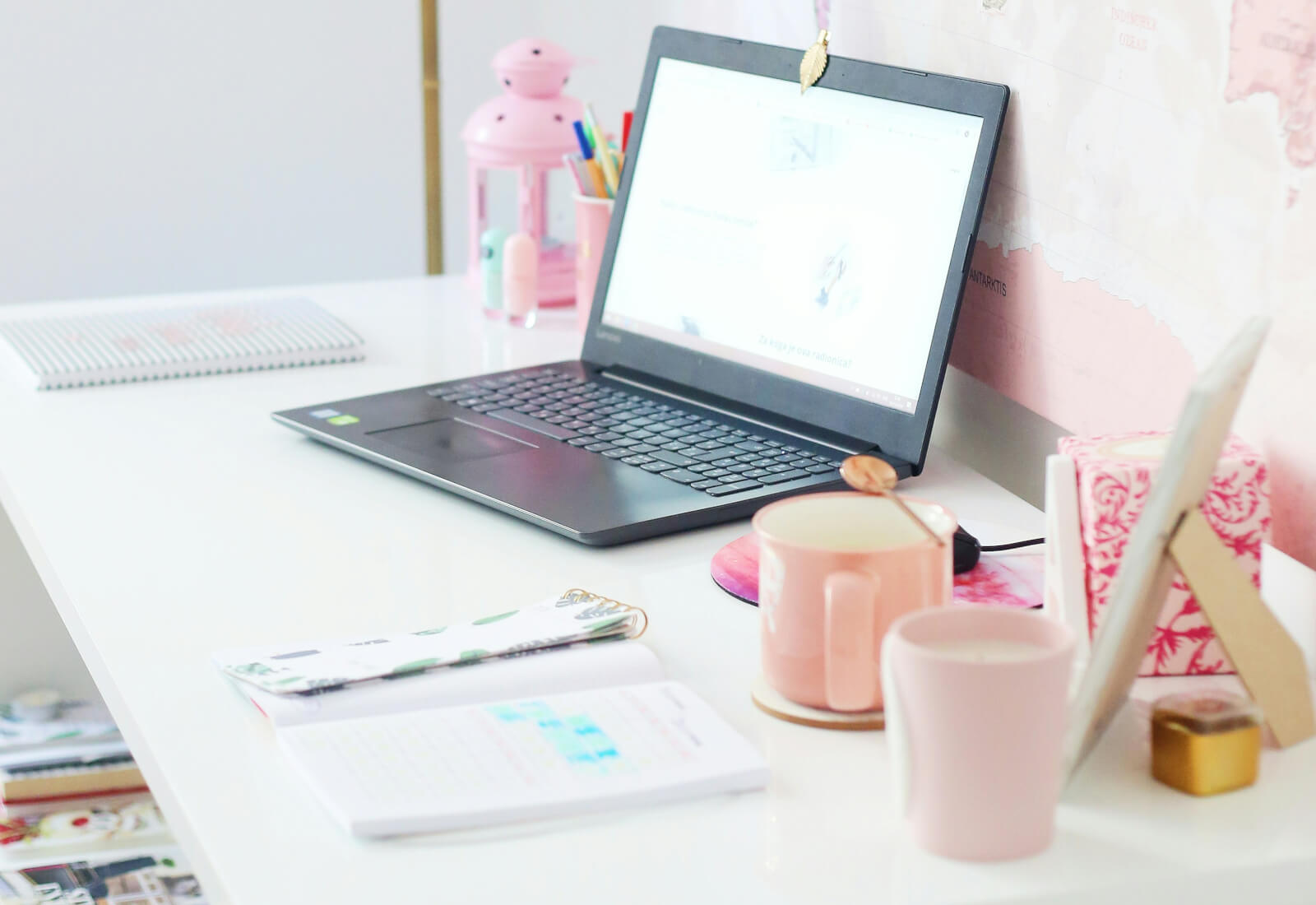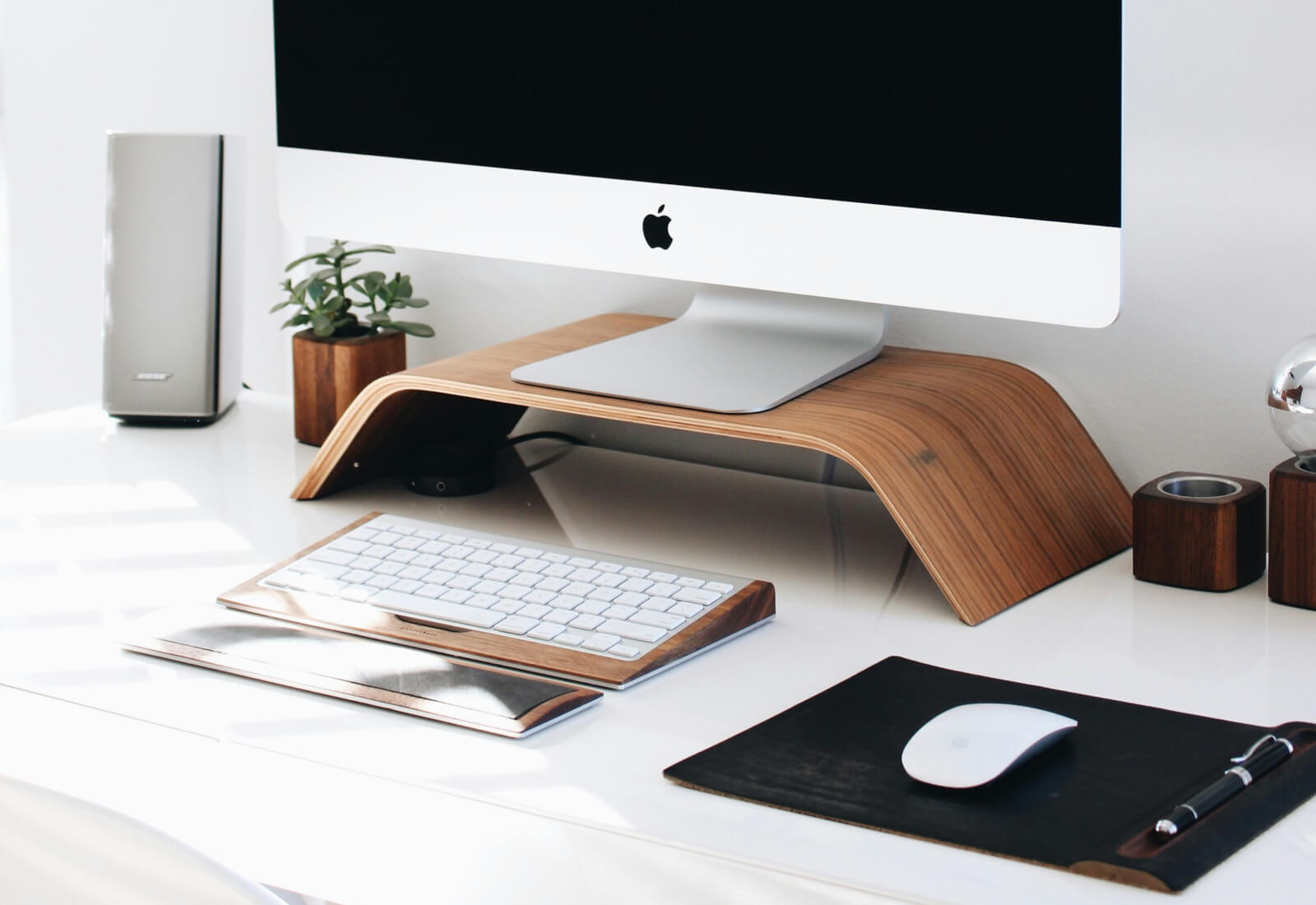
Thing is, we’ve all been there. You’re an hour into a three-hour video meeting, and your mind is already wandering to your weekend plans.
read more
Working from home has become the new normal for many of us. But let’s be real - not everyone has a swanky ergonomic setup waiting for them at home. So how do we avoid turning into the Hunchback of Notre Dame while crushing our to-do lists?
As someone who’s been rocking the WFH life for years, I’ve learned a thing or two about keeping my body happy without breaking the bank. Ready to transform your home office from a pain in the neck (literally) to a productivity paradise? Let’s dive in!
Maintaining a neutral spine position is crucial for preventing back pain and long-term damage. But what does “neutral” even mean? Imagine a string pulling you up from the crown of your head, elongating your spine. Your shoulders should be relaxed, not creeping up towards your ears like they’re trying to eavesdrop on your thoughts.
I once spent an entire day hunched over my laptop like Gollum with his precious ring. By evening, my back was screaming louder than a toddler denied ice cream. Not fun, folks.
Action step: Set a reminder on your phone to check your posture every hour. When it goes off, take a deep breath and reset. Your future self will thank you.
Mini-challenge: For the next week, every time you get a notification on your phone, use it as a cue to check and correct your posture. It’s like a game of “posture tag” - you’re it!
Having a dedicated workspace helps your brain switch into work mode and makes it easier to maintain good posture. Don’t have a spare room? No problem! Get creative.
When I first started working from home, my “office” was wherever I could balance my laptop. One day it was the kitchen counter, the next it was my bed. Let’s just say productivity was not my friend during those nomadic work days.
Action step: Identify a consistent spot in your home for work. It could be a corner of your dining table, a repurposed closet, or even a fold-down desk. The key is consistency.
DIY tip: No space for a permanent desk? Try creating a fold-down desk using a wall-mounted shelf and some hinges. When not in use, it can fold flat against the wall, saving precious space.
Proper lighting is crucial for reducing eye strain and headaches. Natural light is ideal, but if that’s not possible, invest in a good desk lamp.
I once tried working in a dimly lit room, thinking it would help me focus. Instead, I ended up squinting like a mole emerging from its burrow. Not exactly a recipe for productivity.
Action step: Position your light source to minimize glare on your screen. Experiment with different angles until you find the sweet spot.
DIY hack: No desk lamp? No problem! Use a clip-on reading light attached to a nearby shelf or even your laptop screen. Just be careful not to block your webcam if you have video calls!
Your screen should be at eye level, about an arm’s length away. This helps prevent neck strain and reduces the temptation to hunch forward.
I used to work with my laptop on my actual lap (shocking, I know). My neck felt like it had been through an intense CrossFit session by the end of each day.
Action step: Use books, boxes, or even that stack of unread magazines to elevate your screen. Just make sure your makeshift stand is stable. We don’t want any laptop avalanches!
Creative solution: Build a custom laptop stand using Lego blocks. It’s adjustable, fun to make, and a great conversation starter for video calls!
Taking frequent breaks to move and stretch is crucial for maintaining good health and productivity.
I once got so engrossed in a project that I sat in the same position for four hours straight. When I finally stood up, I felt like the Tin Man from Oz - creaky and in desperate need of oil.
Action step: Set a timer for every 30-45 minutes. When it goes off, stand up, stretch, or do a quick lap around your home. Bonus points if you can convince your pet to join you for a mini dance party.
Mini-challenge: Create a “movement jar” filled with small slips of paper, each with a different quick exercise written on it. Every time your timer goes off, pull out a slip and do that exercise.
Alternating between sitting and standing throughout the day is like a secret weapon for your body. It helps improve circulation, reduces the risk of back pain, and keeps you more alert.
When I first tried a standing desk, I went all in and stood for 8 hours straight. Big mistake. My feet felt like they’d run a marathon, and I was more focused on my aching calves than my work.
Action step: Use a high counter or stack some boxes on your regular desk for standing work sessions. Aim for 30-60 minutes of standing work per day, gradually increasing as you get comfortable. Remember, it’s a shuffle, not a sprint!
DIY standing desk: Use an ironing board as an adjustable standing desk. It’s height-adjustable, portable, and you probably already have one at home!
Every 20 minutes, take 20 seconds to look at something 20 feet away. This simple rule helps reduce eye strain and gives your peepers a much-needed break from staring at screens all day.
I used to ignore this rule, thinking I was too busy for breaks. Then I started getting headaches so bad I thought my brain was trying to escape through my eyeballs. Not a good look, trust me.
Action step: Set a recurring 20-minute timer on your phone. When it goes off, look out a window or focus on the furthest point you can see for 20 seconds. Bonus points if you can spot a squirrel doing acrobatics or a neighbor attempting TikTok dances.
Eye exercise game: Create a “20-20-20 bingo card” with different things to spot during your eye breaks. First one to get bingo wins… healthier eyes!
A DIY standing desk doesn’t have to be complicated. A sturdy box or pile of books on your regular desk can do the trick.
My first standing desk was a precarious tower of cardboard boxes. It wobbled like a Jenga tower in an earthquake, but hey, it got the job done!
Action step: Create a simple standing desk setup. Ensure your screen is at eye level and your keyboard is at a comfortable height for typing. Start with short standing sessions and gradually increase duration. And maybe invest in some non-slip mats if you’re going the cardboard route.
Upcycle challenge: Turn an old bookshelf into a standing desk by removing some shelves and adjusting the remaining ones to the right heights for your equipment.
Establishing a consistent routine with regular movement breaks is key to maintaining good ergonomic practices.
When I first started working from home, my routine was as chaotic as a cat on catnip. I’d work in sporadic bursts, forgetting to eat or move for hours. Needless to say, my body was not happy.
Action step: Create a daily schedule that includes designated times for movement breaks. Treat these breaks as non-negotiable appointments with yourself. Maybe even give them fancy names like “The Great Stretch of 10:30” or “The Midday Mambo”.
Routine gamification: Create a “Work From Home Bingo” card with different ergonomic and productivity tasks. Each time you complete a row, treat yourself to a small reward.
No lumbar support? No problem! A rolled towel or small cushion placed at the small of your back can work wonders.
I once tried using a throw pillow for lumbar support. It was great until I leaned back and sent it flying across the room, startling my cat into a fur-raising frenzy.
Action step: Experiment with different sizes and positions of rolled towels or cushions until you find what feels comfortable for your lower back. And maybe keep the cat out of the room during your experiments.
DIY lumbar support: Fill a long sock with rice or beans to create a moldable, custom lumbar support cushion.
Your chair height should be just right - not too high, not too low. Your feet should be flat on the floor with your knees at a 90-degree angle.
I once spent a week working from a barstool because it was the only chair available. By day three, my legs were dangling like a puppet’s and my back felt like it had been through a Twisted Sister mosh pit.
Action step: Adjust your chair height so your feet are flat on the floor. If your feet don’t reach, use a footrest or a stack of books. If all else fails, channel your inner child and swing your legs - just don’t kick anyone!
DIY footrest: Use a small storage container filled with sand or pebbles. It’s adjustable, and you can use it for foot exercises during breaks!
Incorporating mini-exercises throughout your day can help counteract the effects of sitting.
The first time I tried desk yoga, I got so into it that I accidentally knocked over my coffee mug mid-warrior pose. My keyboard got a caffeine bath, and I learned the importance of clearing my desk before channeling my inner yogi.
Action step: Try simple stretches like shoulder rolls, neck rotations, or seated twists every hour. Set reminders if needed. Just remember to secure any loose items on your desk first!
Yoga challenge: Create a “desk yoga routine” with 5-6 simple poses you can do in your chair. Practice the routine during your breaks and see how it improves your flexibility over time.
Using voice-to-text software can give your fingers a break and reduce the risk of repetitive strain injuries.
When I first tried voice-to-text, my cat decided it was the perfect time to start a lengthy conversation with me. The resulting email to my boss was… interesting, to say the least.
Action step: Experiment with voice-to-text for emails or documents. Start with short sessions and gradually increase as you become more comfortable. And maybe invest in a “Do Not Disturb” sign for your furry coworkers.
Voice-to-text game: Try dictating a short story or poem using voice-to-text. See how accurate it is and have a laugh at any hilarious misinterpretations.
Your kitchen counter or a high dresser can make an excellent temporary standing desk.
I once set up my laptop on my kitchen counter, feeling very proud of my ergonomic ingenuity. Then I accidentally knocked a glass of water into the sink, creating a mini tidal wave that threatened to give my laptop an impromptu bath.
Action step: Identify surfaces in your home that could work as standing desks. Rotate between these and your regular desk throughout the day. Just make sure to keep any liquids at a safe distance!
Standing desk tour: Create a “standing desk tour” of your home. Work for 30 minutes at each “station” throughout the day. It’s like a productive scavenger hunt!
Set reminders to check and reset your posture throughout the day. It’s easy to slip into bad habits, especially when you’re focused on work.
I once got so engrossed in a project that I didn’t move for hours. When I finally stood up, I felt like a rusty robot from a B-grade sci-fi movie.
Action step: Use the Pomodoro technique - 25 minutes of work followed by a 5-minute break. During the break, reset your posture and do a quick stretch. Bonus points if you can come up with a creative name for each stretch!
Posture reset challenge: Create a “posture reset roulette” wheel (you can make a virtual one online). Spin it during your breaks to determine which posture reset exercise you’ll do.
Create an ergonomic focus zone with minimal distractions.
My first attempt at a “focus zone” involved noise-cancelling headphones and a “Do Not Disturb” sign. It worked great until my cat decided the sign was a new toy and my leg was a scratching post.
Action step: Assess your workspace for potential distractions. Use noise-cancelling headphones or set up a “do not disturb” sign to minimize interruptions. Maybe invest in a cat toy or two if you have furry coworkers.
DIY focus shield: Create a collapsible “focus shield” using a tri-fold presentation board. Decorate it to make it fun, and set it up around your workspace when you need to concentrate.
Implementing regular postural changes throughout the day is key to preventing stiffness and fatigue.
I once tried to work an entire day while lying on my stomach like a teenager talking on the phone in an 80s movie. Let’s just say my neck and shoulders were not amused.
Action step: Create a “posture playlist” - a list of different working positions you can cycle through during the day. Include sitting, standing, and even periods of lying down if possible. Just maybe skip the “teen talking on the phone” pose.
Posture change challenge: Set an alarm for random times throughout the day. When it goes off, you must change your working position. It’s like ergonomic musical chairs!
Using books or boxes to elevate your screen is a classic DIY ergonomic hack.
My first screen riser was a stack of old college textbooks. It worked great until I needed to reference one of them and caused a textbook avalanche on my desk.
Action step: Gather sturdy books or boxes. Experiment with different heights until your screen is at eye level when you’re sitting up straight. Pro tip: Maybe don’t use books you might actually need.
Creative riser: Use Lego bricks to build a custom, adjustable laptop stand. It’s fun, functional, and you can change it up whenever you want!
Experiment with different seating options throughout the day.
I once tried using an exercise ball as my office chair. It was great until I got a little too enthusiastic during a conference call and bounced right out of frame. My colleagues got a good laugh, at least.
Action step: Try sitting on a stability ball or kneeling chair for short periods. Gradually increase duration as your core strength improves. Just maybe practice your balance before any important video calls!
Seating roulette: Assign numbers to different seating options in your home. Roll a die (or use a random number generator) every couple of hours to determine where you’ll work next.
Creating an ergonomic home office doesn’t have to be expensive or complicated. With a little creativity and mindfulness, you can transform any space into a comfortable, productive work environment.
Remember, the key is to listen to your body and make adjustments as needed. What works for someone else might not work for you, and that’s okay. Ergonomics is not a one-size-fits-all solution.
So go forth, my fellow home office heroes! Conquer that makeshift workspace, slay that to-do list, and remember to stand up and stretch every once in a while. Your body (and your future self) will thank you.
Now, if you’ll excuse me, I need to go do some desk yoga and remind my cat that my keyboard is not, in fact, her personal heating pad. Until next time, stay ergonomic, my friends!
These tips and tricks aren’t just about avoiding pain - they’re about creating a sustainable, enjoyable work environment that keeps you productive and healthy in the long run. So don’t be afraid to experiment, find what works for you, and have a little fun with it. After all, who says ergonomics can’t be entertaining?
Remember, Rome wasn’t built in a day, and neither is the perfect home office setup. Be patient with yourself, celebrate small victories, and keep adjusting until you find your ergonomic sweet spot. Your body, mind, and work will all benefit from the effort.
Now, go forth and conquer your home office, one ergonomic hack at a time! And if all else fails, just remember: at least you’re not trying to work from a medieval dungeon. Although, come to think of it, those stone walls would make for some excellent posture support…

Thing is, we’ve all been there. You’re an hour into a three-hour video meeting, and your mind is already wandering to your weekend plans.
read more
It was 2 AM, and I found myself staring at a passive-aggressive Slack message from a coworker.
read more
Hey there, fellow WFH warriors! It’s your girl Priya, coming at you live from my cozy Capitol Hill apartment.
read more
Hey there, fellow work-from-home warriors! 🏠💼 Remember when we thought working from home would be all pajamas and productivity?
read more
Thing is, I never thought I’d miss my morning commute. But there I was, three weeks into working from home, staring at my laptop in my pajamas at 2 PM, wondering where my motivation had gone.
read more
Working from home seemed like a dream until it became my reality.
read more